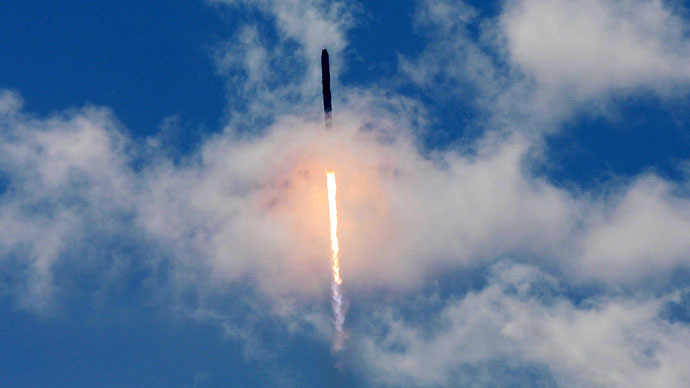Rockets in ruins: Spectacular unmanned spaceship crashes (VIDEOS)

The race to break new boundaries in space is as hot as ever. However, for every new frontier conquered, there are also crushing setbacks – the latest being a failed SpaceX mission, which landed in the Atlantic Ocean, rather than docking with the ISS.
Falcon – June 2015
Billionaire Elon Musk, the CEO of SpaceX is boldly straining to break NASA’s stranglehold of the US space market. However, the project suffered yet another setback on Sunday, as an unmanned Dragon supply ship got nowhere near the International Space Station (ISS) and landed in the Atlantic Ocean, as the Falcon 9 rocket propelling it suffered a malfunction.
Falcon – January 2015
Space is proving to be a tough learning curve for Musk and SpaceX. In January, Musk was testing to see about the possibility of landing a reusable Falcon 9 rocket on a floating platform. However, the landing was a little too hard and the rocket ended up bursting into a ball of flames.
Falcon – August 2014
Despite all the hype surrounding SpaceX, three high profile crashes in just over nine months does not instill a whole lot of confidence of it becoming a viable alternative to the Russian Soyuz rockets. In August 2014, an unmanned SpaceX Falcon 9 rocket broke up in mid-air after taking off in Texas. The rocket began to veer off course almost immediately, which caused the onboard safety system to issue a self-destruct command.
Antares – October 2014
An unmanned Orbital Antares rocket suffered a similar fate as it crashed just seconds after take-off in Virginia in October last year. The $200 million rocket was carrying supplies to the ISS before it caught fire. Stunning video footage was released a month later giving some spectacular close-up shots of the explosion. There were recordings from different angles to capture the moment the rocket went up in flames.
Progress – April 2015
Failed space missions don’t just happen in the US, Russia has had its fair share of cosmic mishaps too. In April, a Progress spacecraft was supposed to link-up with the ISS to deliver supplies. However, a malfunction meant the craft was left spinning out of control. Mission control in Moscow was unable to regain contact with the supply ship and it eventually landed in the middle of the Pacific Ocean.
Proton – May 2014
In May 2014, Roscosmos suffered another setback, as a Proton-M rocket, which was carrying what would have been Russia’s most-powerful satellite, crashed in a ball of flames. The satellite was to provide internet access in Russia’s remote regions at affordable prices. The crash happened about nine minutes after take-off. A year later, another Proton rocket crashed after trying to deliver a Mexican satellite into space.












